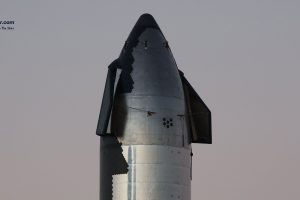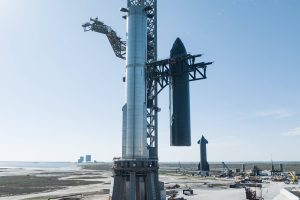- 🚀 SpaceX successfully launched the second Integrated Flight Test of Starship from Starbase, Texas.
- 🕒 The launch occurred just after 7 a.m. CT, following a brief hold at t minus 40 seconds.
- 🚀 The countdown and filling of the rocket went smoothly, with no reported issues.
- 🌌 The first phase of flight showed significant improvements, with all 33 Raptor engines performing nominally and a flawless hot staging.
- 🌐 Booster 9 experienced an anomaly during its flip for the boost backburn, leading to the rocket’s destruction.
- 📡 SpaceX seemingly lost signal with Ship 25 around t+ 8 minutes, and the automated flight termination system activated.
- 🛠️ Despite the anomalies, this test marked a huge improvement over the first flight, showcasing greater reliability in the Raptor engines.
- 🚀 The launch pad also fared better, with no visible debris issues, potentially allowing for a faster return to flight for Starship.
- 🌍 The article raises the question of whether SpaceX’s performance on the second test indicates vast improvements or if more work is needed.
Following a brief hold at t minus 40 seconds, Starship took to the morning skies just after 7 a.m. CT from Starbase, Texas.
The countdown flowed smoothly as the SpaceX team filled the gigantic rocket in the pre-dawn hours, working no issues outside, making sure there were no wayward boats downrange.
After the hold was lifted, the clock counted down. Once t-minus 3 seconds, the 33 Raptor engines roared to life and began ramping their thrust levels up, and at t+ 2 seconds, Booster 9 and Ship 25 thundered away from the orbital launch mount, clearing the launch tower in a matter of seconds.
The first phase of flight was perfect, with all 33 Raptor engines performing nominally, a marked improvement over the first test flight. Ship 25 and Booster 9 cleared Max Q just over a minute into the flight per the call out on the SpaceX launch stream.
At t+ 2 minutes and 50 seconds, 30 Raptor engines shut down on Booster 9, and Starship lit all 6 Raptor engines to pull away, the first-ever successful hot staging for SpaceX.
Booster 9 then began its flip to prepare for the boost backburn, but based on the stream, it appeared to possibly over-rotate, and the flight termination system destroyed the rocket.
For just over the next 5 minutes, all 6 Raptor engines on Ship 25 were firing nominally until SpaceX seemingly lost signal with the vehicle, possibly being the reason the automated flight termination system activated. This has yet to be confirmed by SpaceX. Based on the stream, engine shutdown appears to occur t+ 8 minutes and 4 seconds, followed by flight termination at t+ 8 minutes and 7 seconds.
Overall, this was a huge improvement over the first test flight. SpaceX showed much greater reliability in the Raptor engines, with none of the 33 Raptor engines malfunctioning during the first stage burn, a flawless hot stage, and a very smooth Ship 25 burn until SpaceX lost signal.
The launch pad seemingly faired much better this time around as well. Various live streams from the launch pad did not show giant chunks of debris flying after lift-off, which can help set SpaceX up for a much faster return to flight for Starship following their mishap investigation.
How do you think SpaceX did the 2nd time around? Vast improvements, or do you think they need a lot more work first?





